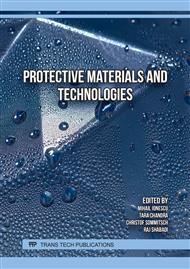p.3
p.9
p.15
p.21
p.29
p.35
p.41
p.49
Effect of Zirconium Conversion Coating on Corrosion Resistance of Small-Defected Auto Steel Sheets
Abstract:
For the sake of environmental protection and energy conservation, traditional phosphate pretreatments have been gradually prohibited worldwide during automobile productions. As a promising substitute, the green and environment-friendly zirconate pretreatment technology is developing rapidly. However, because the thickness of zirconium conversion coatings is commonly ranged in nanoscale, its covering capability for small defects is inferior to that of phosphate film, which may have a detrimental impact on the service performance of automotive steel sheets. In this study, comparing the surface characteristics of cold rolled auto steel sheets before and after zirconate treatment, the effects of zirconium conversion coating on the surface defect transmission and the corrosion resistance of the sheet were investigated. The results showed that although the defects were detected and recognized after the treatment, the coating was able to grow normally at the surface of small defects and effectively improve the corrosion resistance of the defects. The surface corrosion resistance for some types of defects was basically equivalent to that of the intact surfaces.
Info:
Periodical:
Pages:
3-7
Citation:
Online since:
December 2023
Authors:
Price:
Сopyright:
© 2023 Trans Tech Publications Ltd. All Rights Reserved
Share:
Citation:



